Just For Kids

Although we love to tell stories, we get even greater pleasure from teaching kids to tell. The photos of student tellers throughout this site give a good idea of why we have so much fun teaching. When students put their hearts and souls into their stories, they get a wonderful response from listeners. Once they take the risk and try it, there's no stopping them! If you haven't already tried telling stories, hopefully these young tellers will inspire you to try.
Answers To Questions Kids Like to Ask Martha & Mitch
- How long have you been storytellers?
- What's your favorite story?
- Can I become a storyteller?
- Do you get nervous when you tell stories?
- Do you have any advice for young storytellers or writers?
- Do you have children?
- Do you have hobbies?
- Is Mitch always silly?
- Where's Mitch?
- Which one of you is the Beauty and which one's the Beast?
- Did you really see a donkey standing in the road?
- Did Martha really see a huge, live spider on a dress?
- Are you two married?
- Did Mitch really have red hair?
- Where are some of the places you have traveled?
- Where are some of the beautiful places have you hiked?
How long have you been storytellers?
This question really has two answers. The first is that we have been telling stories professionally since 1980. Since 1983, storytelling has been our full time job. We consider ourselves very lucky that our job is something that we love to do so much. The photo below is of us when we first started telling stories. We may have looked younger then but we are much wiser now!
The second answer is that we have been telling stories all of our lives. So have you. Everybody communicates with friends and family by telling stories.
What's your favorite story?
This is one of the questions we get asked most often. Unfortunately, it's hard to answer. We have to love every story we tell. We always have stories that are current favorites, usually the ones that we've learned most recently. It's a great feeling to put time and effort into developing a new story and discover that the audience loves it as much as you do. One story that will always remain special to us is the very first story we learned together, Where the Wild Things Are, by Maurice Sendak. Although we haven't told it in twenty years, we'll never forget the first time we did and discovered how much the listeners enjoyed it.
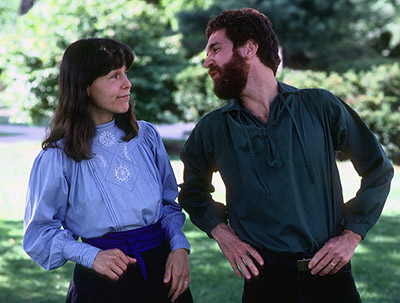
Can I become a storyteller?
Of course you can! Whether you realize it or not, you already are a storyteller! You tell stories all the time - about what happened on the school bus today, the time you got lost, or the great practical joke your dad once played on his brother.
If something really funny happens to you, and then you see a friend, what's the first thing you want to do? Tell them about it! Storytelling can be as simple as sitting in your living room and sharing what happened today with a good friend. It can be standing and telling a story in front of a group, around a campfire, in a classroom, or on a street corner on a summer's day.
Do you get nervous when you tell stories?
Even though we have been telling stories since 1980, we still get nervous when we learn a new story and tell it the first couple of times. Once we've told the story several times for listeners, the nervousness disappears. We have worked with thousands of students who were nervous but took a risk and found they loved telling stories. Many feel the way an eleven year old named David did. He wrote: "At first I thought, 'I'll never be able to do this.' I was so worried I might mess up and everyone would laugh at me. But by the time I told my story I had practiced so much that it felt easy. When I saw everyone smiling and clapping, it was a great feeling. Now I think I can do anything!" And a nine year old named Jennifer wrote: "I was scared to death. I thought I might forget everything and just stand there saying 'Uhm, Uhm, Uhm,' or maybe I would faint in front of everyone. Then when I told it and people laughed, it was so exciting. I wanted to do it again and again for an even bigger crowd. Now I know what it's like to be famous. If I hadn't tried, I would never have known how much fun it would be."
Storytelling involves taking a risk. But when you see the eyes of your listeners get bigger and bigger as you tell them a scary story, or hear their chuckles when you come to a funny part, you too will want to tell your story again and again.
Do you have any advice for young storytellers or writers?
For young writers we suggest reading, reading, and more reading. The more you read, the more you learn what you like and don't like in a story. This will greatly influence your own writing. Try to write something every single day. This might take the form of a journal of your life or a story that you are creating. We also recommend that young writers tell folktales or short stories by authors the love. When you learn a story and share it orally with others, it's as if you go inside the story and live there for a while. As a result, you learn a great deal about the structure of a story without even thinkng about it! Afterward, you'll find that your own writing has grown by leaps and bounds.
If you want to tell stories, you must first find a story you really love. We recommed folktales because tey are meant to be told orally, without a book. Read as many stories as you can get your hands on and don't make your decision too quickly. What makes a good story for telling? Maybe it makes you laugh, or think a lot, or gives you a little shiver down your spine. If it's a good one for you to tell, you'll feel like you just can't wait to share it with someone. If you like a story, read it over at least five times before you make a decision on whether to learn it. If you still love it after five readings, it's a good one for you. Take a chance. Get off the couch, turn off the television, and delight your friends and family with a story.
Do you have children?
Although we don't have children, we get to work with young people almost every day and thus have many children. It is a great privilege to work in schools and have such wonderful interactions with students.
Do you have hobbies?
There are lots of things that we love to do in addition to telling stories. Our hobbies include gardening, reading, hiking, listening to music, cooking, playing tennis, and bicycling. We especially enjoy getting together with friends. We need more than twenty-four hours a day to do all the things we enjoy! We are both passionate about traveling and have learned a great deal about the world from our travels. We've included a picture of us hiking in France and of our beautiful gardens at our house.
Is Mitch always silly?
Well, not always. But he is a lot of fun to be around. And Martha, who has a goofy side herself, put him up to some of his silly exploits because she loves to take photos. Click the picture to see a sample of her "Silly Mitch" photos.
Where's Mitch?
Okay, this wasn't really a question, but here's a challenge for you. Can you find Mitch in these photos? Some are easy but we thought you'd enjoy the photos. Keep checking back, more to come . . . Click the picture to start finding "Mitch".
Which one of you is the Beauty and which one's the Beast?
Sorry, but you can't trick us into giving the answer. We never, ever tell. You'll just have to decide for yourself.
Did you really see a donkey standing in the road?
Yes! We are often asked this after we tell "The Taxi Ride," from our book, How and Why Stories: World Tales Kids Can Read and Tell. It is a West African story that explains why dogs chase cars, goats run away from cars, and donkeys stand right in the middle of the road and refuse to move. Although most people have seen dogs chase cars, only those in rural areas are likely to have seen goats and donkeys near a road. When we told stories in Greece many years ago, we often came upon goats near country roads - and found that they quickly scurried away when they saw our car. Here's a picture to prove it:

When we traveled to a storytelling festival in Ireland, we came upon a donkey standing in the middle of a small country road. We honked at him but he stood right in our way. He stared at us as if he owned the road and we had a lot of nerve to honk at him. We finally managed to go around him even though he didn't move. We watched to see what happened when a woman came by and honked and yelled at him. She was probably the donkey's owner, although we never talked with her to confirm this. We did take a picture:

Although the woman kept yelling and honking, the donkey stood firm and continued to stare at her. After about five minutes, when he was good and ready, the donkey finally turned and left the road.
Did Martha really see a huge, live spider on a dress?
When Martha tells "The Story of Arachne," from How and Why Stories: World Tales Kids Can Read and Tell, she sometimes tells about being in a store in Taiwan looking at dresses. She saw a beautiful large spider on a dress and at first thought it was a decoration. But then it moved! For those of you who doubted her and wanted to see a picture, here it is.

Are you two married?
Yes! And we have been for a very long time, as you can see from the photo!

Did Mitch really have red hair?
He certainly did. One of the first stories we told together was called A Penny a Look by Harve and Margot Zemach. There were two characters - the Lazy-Good-for-Nothing and the Red-Headed Rascal. Martha knew that she would certainly have no choice but to be the Lazy Good-for-Nothing...

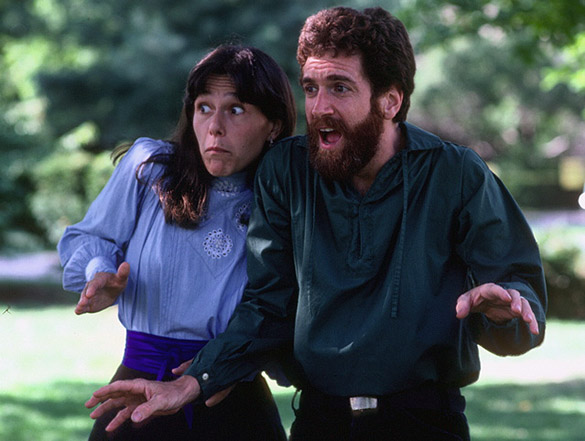
Where are some of the places you have traveled?

We have been very lucky to have the chance to travel to some amazing places for our work. Wherever we go, we make sure that we have time to see the interesting spots nearby. Click on the picture to see highlights of the places we've been.
You can also click here to view a slideshow of our trips to Taiwan and Hong Kong.
Where are some of the beautiful places have you hiked?

We love to walk. It's the best way to see a place because you can take in all the beauty at a slow pace. Things fly by too quickly in a car. It's especially fun to hike with friends because when you talk and tell stories as you hike, you don't get tired or bored. Our favorite vacation is to pick a beautiful place with trails, put whatever we need in a backpack, and set off on foot. Sometimes we do day hikes, but other times we walk from one village to another and stay in bed and breakfast inns for the evening. Here are a few highlights:
back to topKids' Artwork and Letters
Click on a letter to make it bigger!






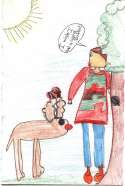
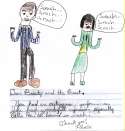
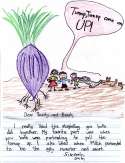

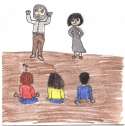
back to top
Storytelling Tips by Third Graders
These tips for storytelling were written by several third graders at Northeast School in Ithaca, New York. After the children had learned to tell stories, they each made booklets with "Six Tips for Storytelling" to show what they had learned about storytelling techniques and speaking in front of a group.
Click on any tip to make it bigger.















